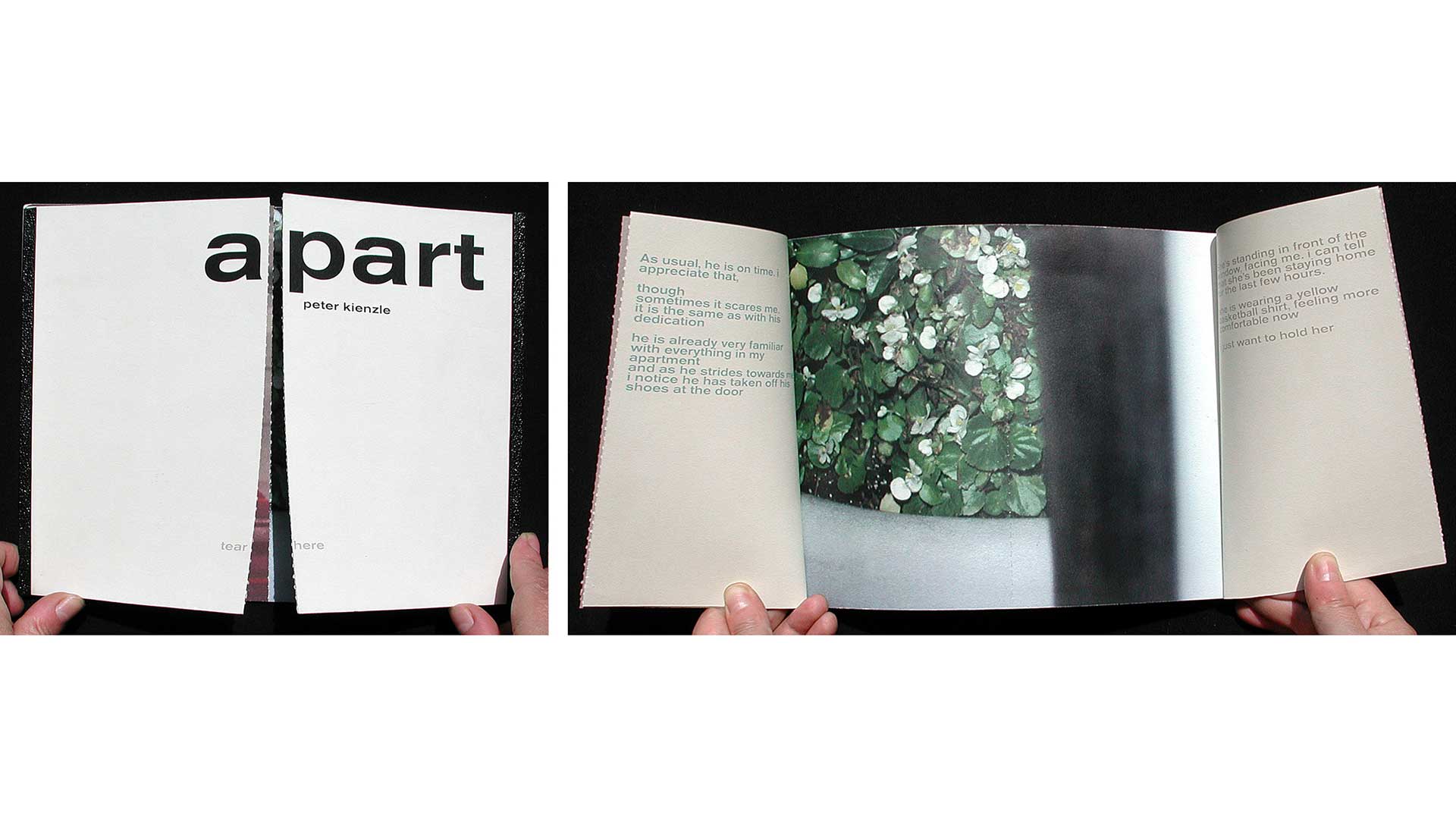Warren Lehrer Makes Experimental Books
Warren Lehrer has been a faculty member since the beginning of the program over 20 years ago. A master of the “expressive book,” in his class, “Writing and Designing the Visual Book,” students turn out unique objects. “Through the years, I’ve loosened up about the bookishness of the class,” he says. “While I always had a very expansive view of what a book can be and encouraged a lot of invention in that regard, now any given project can be considered a book. The most important things for me are 1) the writing, 2) the visual composition of the writing via typography/lettering and 3) composing original texts within and through a time-based medium. Books are perfect for that, but if a student wants to make an animated video or a website or interactive installation, that’s fine with me.”
“My SVA class has been called ‘Writing and Designing the Visual Book.’ Through the years, I’ve loosened up about the bookishness of the class. While I always had a very expansive view of what a book can be and encouraged a lot of invention in that regard, now I don’t really care if any given project—even the final independent project—can be considered a book or not. The most important things for me are 1) the writing, 2) the visual composition of the writing via typography/lettering 3) composing original texts within and through a time-based medium. Books are perfect for that, but if a student wants to make an animated video or a website or interactive installation, that’s fine with me.”
“That said, it’s also interesting to see the passion and thirst students have today for physical books, for paper, well-made things, the smell of ink and feel of a three-dimensional object that isn’t made of metal or plastic. Over these twenty years, ebooks became a thing, and Kindles and iPads and social media, and reading and writing and swiping constantly in the palm of your hand. And with all of that, books have been liberated from their role of being the most convenient vessel for embodying and transporting texts. Instead of finally dying, there’s been a reconsideration of the book. What are the properties of the medium that make it unique and special? That’s always been an important part of my class, but now it’s taken on a different significance. And while the class looks at and learns from inspiring historical examples of visual literature, I like to always look forward and encourage innovation. In what ways are writers and book artists and new media artists and indie publishers and practitioners of electric literature and creative coders advancing the field? How can the book be part of multi-branched projects, connect to performance or exhibition or function in hybrid platforms with digital, mutable, and online spaces?”
What do you feel is the most valuable offering of your class?
For the longest time graphic designers have been trained to work with other people’s content (clients, teachers, collaborators). My class gives students the opportunity to write and come in contact with subject matter that they care about or are curious about. Many students in the program are longing to be authors of their work and develop their writing skills. But some students are petrified about the prospect of writing. “I am a visual person,” I hear often. And if English isn’t their first language, writing in this unruly language could be even more terrifying. I start my class from zero, almost from a pre-language place. We explode language and then build from there, a word at a time, a title in relation to an image, writing short and then longer texts from different perspectives and voices, up to crafting (sometimes) stirring, funny, revelatory, even transformative stories. I use theater games, automatic and continuous writing exercises, odd project assignments requiring lots of iterations, whatever it takes to get everyone into a pathway for writing, that can hopefully last a lifetime.

But this is a writing class specifically for designers. So we embrace the visual composition as much as the literary composition. That is probably the most valuable part of the class. As much as the writing and design can happen simultaneously or becomes one and the same, the better. It’s not about making a text look good or attractive or snazzy or cool or hip or even legible or efficient. It’s about not assuming what the form should be, but discovering the form and structure through the writing, through the meaning, the rhythms, metaphors, voices, underlying intent or mysteries, and thinking about ways people read or can read or interact with a text. We don’t even make assumptions about what the syntax or structure of the writing should or has to be. We work on writing good sentences and telling well-crafted stories, but even sentence structure and classical story tropes are called into question. Creating original, even “experimental” or exploratory texts, and marrying the form and content—that’s the essence and value of the class.







